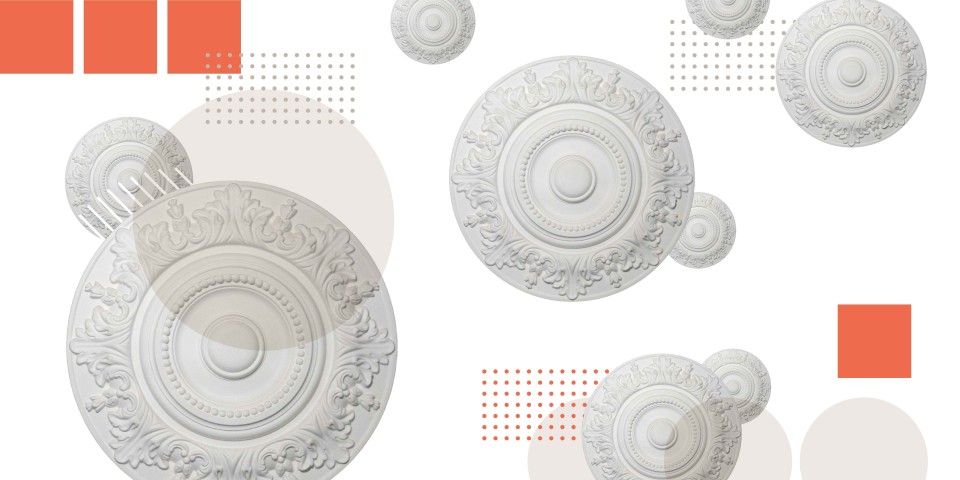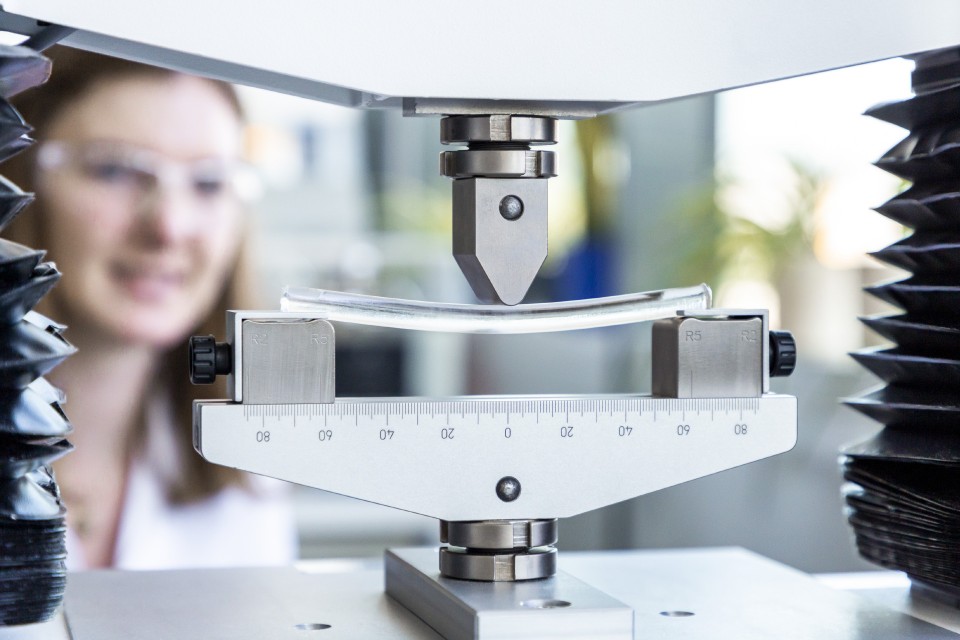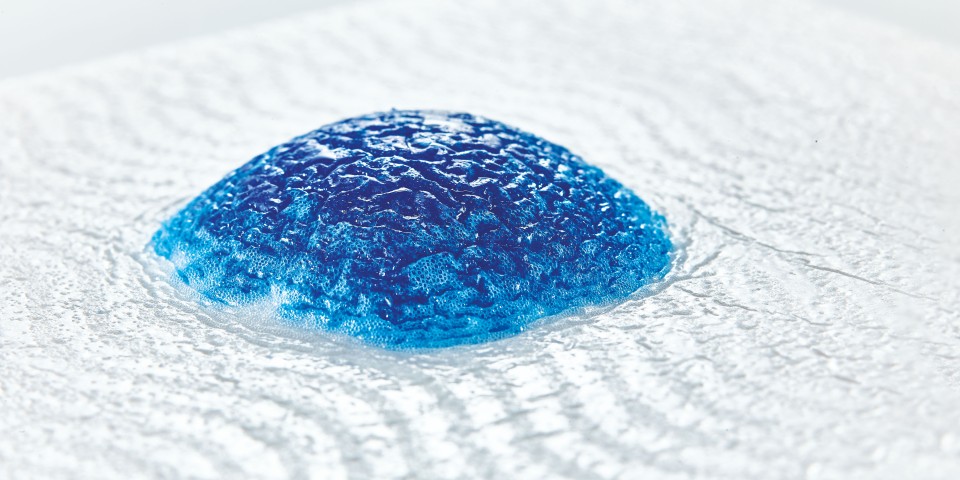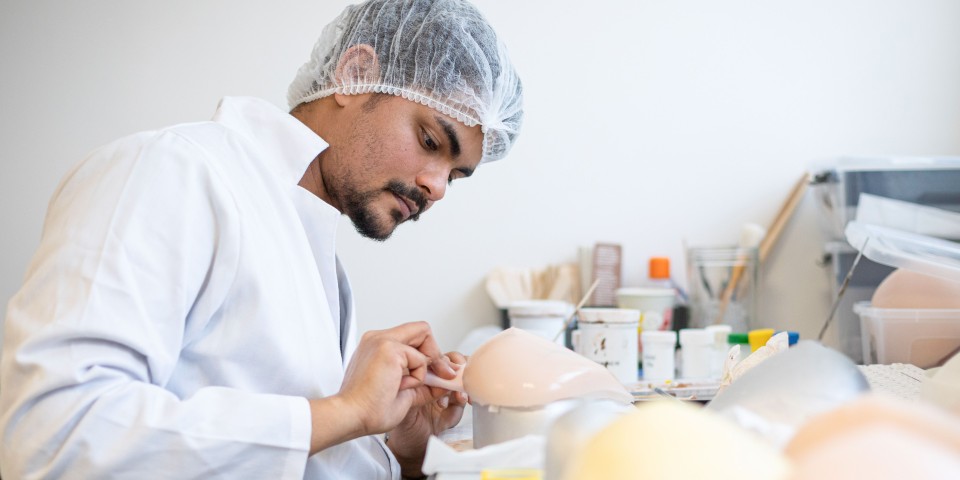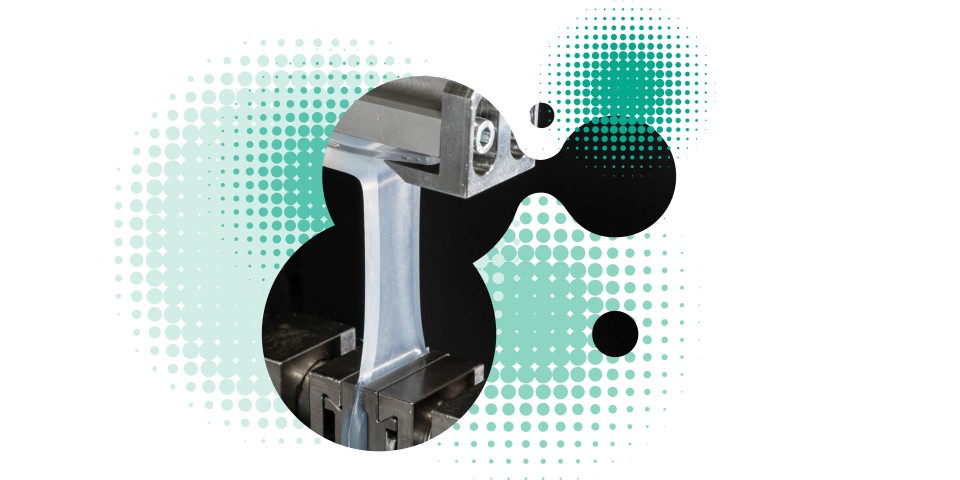Sep 01, 2022 Read time: approx. MinutesMinute
75 Years of Silicones
A Plastic for a Modern World
In 1947, WACKER became the first European company to start working on silicones. Today, the Group is the world’s second-largest manufacturer of these high-performance plastics, which are now ubiquitous in our everyday lives. Here, we look back at the time when the future was taking shape in the most modest of circumstances – in a wooden barracks in Burghausen.
In this furnace, we are producing at least 1,000 kilograms [of silanes] a month, and soon, when we have a further reactor, it will be two to three tons.” “Try to make 200 to 300 tons as soon as you can.” That was the advice given in late 1950 to one Dr. Siegfried Nitzsche by the former managing director, Dr. Johannes Hess, shortly before his death on February 3, 1951. And Dr. Nitzsche, despite all the naysayers, took the advice – and in so doing earned the right to be called the “father of WACKER silicones.” For, according to Nitzsche’s own recollections, even the board of management back then took the view that “we’ll be happy if we can generate a million marks in sales.”
Dr. Johannes Hess
Dr. Siegfried Nitzsche
That WACKER has long since left such modest goals behind is due in no small part to the tireless efforts of Dr. Nitzsche and his unstinting perseverance. Today, WACKER SILICONES is the largest business division of Wacker Chemie AG, notching up sales approaching three billion euros.
The most important of the silanes mentioned in that exchange between Director Hess and Dr. Nitzsche, namely dimethyldichlorosilane, is the precursor to about 2,800 silane and silicone-containing products at WACKER and is produced at Burghausen, Nünchritz and Zhangjiagang. WACKER is thus the undisputed number-two player in the global market for silicones.
The circumstances in which Dr. Nitzsche began his work on silanes and silicones at the Burghausen site in 1947 are worth examining, as they reveal why WACKER countenanced the idea of engaging with this new business area in the first place and the resistance which Dr. Nitzsche initially faced.
The Burghausen plant at the time of Dr. Nitzsche
It all Began with a Mistake
The route followed by Dr. Nitzsche to obtain silicones also proceeded via dimethyldichlorosilane. In the early 1940s, the Chemical Institute in Jena, where he was preparing for his postdoctoral qualification, had received an order from the German Army for the “siliconization of iron pipes.” It is not hard to fathom that these were intended for use as heavy artillery. While working on this task, Dr. Nitzsche’s laboratory assistant suffered a mishap: water came into contact with the sensitive dimethyldichlorosilane, hydrolysis occurred, and Dr. Nitzsche was unable to distill off the resulting oily product – not even at 360 °C. Upon cooling, a rubber-elastic product was obtained, which remained stable even when heated to red-hot temperatures. Without knowing it, Dr. Nitzsche had just made his first silicone rubber. Other, less-talented chemists would have dismissed the incident and returned to the task at hand. But Dr. Nitzsche was fascinated and had now found the subject area for his postdoctoral thesis: “Heat-resistant, silicon-containing plastics.”
Later, in spring 1947, when Dr. Nitzsche was released from an American internment camp for German scientists, he received an invitation from the German Chemical Society. He was asked to deliver a plenary lecture on his thesis subject at its first post-war conference in Heidelberg. Among the audience were two representatives from Wacker Chemie: Chief Chemist Dr. Wolfgang Gruber and Director and Senior Engineer Dr. Eduard Kalb. Dr. Gruber would later describe the event in his memoirs, which were published under the title “Gratwanderungen (Balancing Acts).”
“Here I managed to do the company a great service by recruiting Dr. Siegfried Nitzsche, who gave a very good lecture on silicones, for the Burghausen plant. I had already suggested to Director Hess that we study the field of silicones, because the raw materials fall within our sphere of activity and we could easily get our hands on them (copper-silicon alloys, methyl chloride, possibly silicon tetrachloride). Nitzsche had previously had a job application turned down by the WACKER board in Munich, but this decision was quickly reversed. In just a few years, annual sales of silicones soared into the millions of deutschmarks and the number of articles rose to 100 and beyond!”
WACKER’s Chief Chemist, Dr. Wolfgang Gruber, had his memoirs published (in German only).
The company that would become WACKER started to make elemental silicon in 1914.
Dr. Nitzsche joined WACKER in Burghausen on August 2, 1947, and immediately set about working on WACKER silicones.
What were the raw materials that Dr. Gruber was referring to? Back in 1947, silicon, a semi-metal, was already a longstanding “old familiar” at WACKER. In fact, Elektrobosna, a predecessor company established by Alexander Wacker, had owned a patent for the production of elemental silicon. And before the war, WACKER’s portfolio included numerous alloys for the processing of steels, including calcium silicon, ferrosilicon and calcium aluminum silicon. In the 1930s, WACKER’s plants accounted for two-thirds of German demand for ferrochrome alloy. So, in 1947, the company had access to silicon and was experienced at handling both it and, of course, the hydrogen chloride needed for the production of methyl chloride from methanol.
“In just a few years, annual sales of silicones soared into the millions of deutschmarks and the number of articles rose to 100 and beyond!”
Dr. Wolfgang Gruber
In terms of raw materials, then, Dr. Nitzsche was off to a fairly good start. But in the immediate aftermath of the war, there were still shortages on all fronts elsewhere. Dr. Nitzsche found it hard to get his hands on personnel, equipment, the requisite laboratory and production rooms and even specialist literature. For example, it was from an article in the popular science magazine Reader’s Digest that he learned about the progress being made in the field of silicones in the US. Another difficulty was the patent situation. General Electric (GE) held the important patents for the production of silanes, and another US company, Dow Corning Corporation (DC), had secured the rights to the key steps for processing these into silicones.
Fortunately, both companies were interested in working with European companies on the production and marketing of silicone products. Aside from with WACKER, they concluded contracts with Rhône-Poulenc and Bayer AG. The key licensing agreements with DC were signed in 1951 and those with GE in 1953. And so it came about that the first brochures marketing WACKER’s own silicones were published in 1951, in parallel with a catalog in which WACKER acted as the general agent for DC silicones.
An early example of marketing silicones: the very first product brochures from 1951
Overshadowed by other Products
All the while, Dr. Nitzsche had not been idle. In the face of great adversity and resistance, he had managed to develop and build up his own silane production. This was being done in the “Salettl” – a Bavarian word for summerhouse – in Burghausen. At the time, Wacker Chemie’s focus was entirely on expanding its emerging PVC activities, which Dr. Berg, the later managing director and inventor of PVC suspension polymerization, had commenced back in the 1930s. The lion’s share of the investment budget was therefore flowing into “VINNOL,” WACKER’s brand of PVC, and Dr. Nitzsche had to keep fighting to secure his modest funding.
In his own chronicle celebrating 25 years of WACKER silicones, he wrote: “Until about 1965, when managing director Dr. Maurer began to show an interest in them, silicones – as people said back then – were the whipping boys.”
The fact that PVC would disappear from the Group’s product range in 2000 and that WACKER SILICONES is now the company’s strongest business segment by far would undoubtedly have given Dr. Nitzsche enormous satisfaction. Unfortunately, this brilliant chemist, to whom WACKER owes so much, succumbed to a serious illness in 1974. He was just 59 years old.
“Until about 1965, silicones were the whipping boys.”
Dr. Siegfried Nitzsche
This is how postwar silane distillation started in the “Salettl” summerhouse.
25 Years of Furious Expansion
Further developments in silanes took a leap forward from 1950 on, with the recruitment of two new key employees, Dr. Ewald Pirson and Dr. Manfred Wick. As of 1949, the following products were already available: silicone fluids, oil emulsions, antifoam agents, impregnating agents, pastes and release agents. 1952 saw the appearance of the first silicone rubber grades, followed in 1953 by masonry protection agents – applications which were basic back then but which can still be found in WACKER SILICONES’ product portfolio today in a much more advanced and sophisticated form. By 1959, more than 100 different silicone products were under development.
As demand for silicones rose, the plant in Burghausen expanded. The first production facility had long been too small and was pulled down. Significant sums were invested from the mid-1960s to gradually expand silicone production. The plant was extended in the west and north to create an integrated production system. The idea is to waste nothing and make use of everything. WACKER was thus able to run low-waste and efficient production lines even then.
“On June 26, 1972, the new North Plant started up production of silane.” This report in the plant magazine was something of an understatement. In reality, it was a much more spectacular affair that in subsequent years would be systematically expanded with further facilities to form what is now Burghausen’s integrated siloxane production plant. The plant featured a revolutionary, unenclosed reinforced-concrete design and the first vestiges of automated control in the guise of a control room.
At 51.1 meters, the silane distillation columns erected in 1972 were the tallest of their kind in Burghausen. Recently, after 50 years’ service, they were replaced by a new silane column, which, at more than 70 meters, towers above them.
Dr. Ewald Pirson and Dr. Manfred Wick
Development Products from the First 25 Years of WACKER Silicones
1949—1954: Development of electrical insulating materials with silicone resin binders
- Construction of the first electric motor in Europe to feature silicone insulation (with Loher & Söhne, Ruhstorf)
- Production of the first European dry transformer to feature silicone insulation (with Siemens AG, Nuremberg)
- Silicone fluids as an ointment base in medical and cosmetics applications
- Textile finishing and impregnation
- Development and testing of masonry protection agents
- Cable insulation with silicone rubber
- Silicone-insulated high-voltage motors (3000 V) for the oil fields of Venezuela
- Antifoam agents in the food industry
1955—1957: Silicones for the paper and leather industries
- Room-temperature-vulcanizing silicone rubber as molding material for artistic and technical purposes and as encapsulant for electrical equipment
- Diffusion pump oils for high-vacuum technology
1958—1966: Combination resins (as they were then called) and copolymer oils for the coatings industry
- Silicone pastes for high-voltage technology
- Enhanced release agents for rubber and plastics processing
- Laminating resins and molding compounds for electrical engineering and electronics
- Joint sealants for construction
- Heat-resistant greases for high-stress ball bearings
- Silicone rubber applications in the automotive industry
- Silicone rubber as a prosthetic material and as a depot material for drug formulations in the medical sector
- Alkali-resistant antifoam agents
1967—1972: Enhanced masonry protection agents and their application
- Agents for cleaning up oil spills
- Conductive silicone rubber for panel heaters
- Functional silanes as adhesion promoters, e.g. for processing glass fabric and fibers
- Foam stabilizers for polyurethane foams
- Enhanced paper-coating agents
- Solvent-free casting resins for electronics
- Easy-to-process silicone rubber pellets
A Blockbuster Made up of Byproducts
Around about the same time, in the early 1970s, Dr. Günter Kratel at the Kempten plant of WACKER’s subsidiary ESK developed a filler: HDK® pyrogenic silica, which also turned 50 in 2022. This extremely versatile material can be found in a swath of wholly disparate applications and, among its many uses, has more or less become the default reinforcing filler for WACKER’s silicone rubber.
As early as 1978, a separate HDK® plant was built in Burghausen and hooked up to the integrated silicon production network. What makes this so interesting is that HDK® is itself obtained from byproducts from silane synthesis and is thus part of the integrated production network operated by the WACKER SILICONES and WACKER POLYSILICON divisions. The “silane byproducts” from silane synthesis are pyrolyzed at over 1,000 °C in a hydrogen-oxygen flame, and cool to form flocs that have the basic structure of silicon dioxide (SiO2). In other words, a substance with the same composition as sand. Unlike sand, HDK® from WACKER has a massive surface area that serves as the source of its unique properties. A large bag of HDK® weighs just ten kilograms.
Dr. Günter Kratel
Considerable size, low weight, high demand – pyrogenic silica is made from silane-manufacturing byproducts.
There are very few chemical reactions that give a 100-percent yield of the intended product. This fact underlies one of the key advantages of integrated production at WACKER. Over the decades, chemists and engineers have succeeded in taking a great many byproducts generated in various processes and using them, for example, as starting materials for other products.
Today, demand for WACKER HDK® is so great that it is produced not only in Burghausen, but also in Nünchritz, Zhangjiagang and Charleston. HDK® is therefore a prime example of how, at WACKER, one little cogwheel meshes with another. Waste from silicone production is thus transformed into a new sales product which may not be visible in our living environment, but is nevertheless omnipresent.
Applications of HDK®
- Hydrophilic or hydrophobic reinforcing filler for plastics
- Thickening agent for paints and coatings
- Insulation material for thermally insulating parts
- Flow enhancer for, e.g., fire-extinguishing powder, toner for laser printers or tomato powder for ketchup
- Grinding agent for planarizing silicon wafers
- Pseudoplastic additive for emulsions, dispersions or toothpaste
WACKER Silicones Conquer the World
However, it was not just the range of silicone products that expanded over the decades. The customer base also grew steadily and became more and more international. And that is why, in the late 1960s, it proved necessary to build up production capacity beyond the confines of Burghausen. Wacker Chemie took an initial 33.3-percent stake in SWS Silicones Corporation (Stauffer-Wacker Silicones) in Adrian, Michigan, gradually increasing it to 100 percent by 1987. The name was changed to Wacker Silicones Corporation (WSC).
In early 1978, Wacker Química do Brasil Ltda. began manufacturing and selling silicone products in Jandira near São Paolo, and, with the 1983 founding of Wacker Chemicals East Asia (WCEA) in Daito-cho, Japan, WACKER silicones made the leap into Asia. 1998 brought another important cornerstone in the Asian market, with the founding of the joint venture Wacker Metroark Chemicals Pvt. Ltd. in Kolkata, India.
3,000 products are made by WACKER today, including silanes, siloxanes, silicone fluids, silicone emulsions, silicone elastomers and silicone resins.
The photos show clearly that the Nünchritz site has flourished since it was taken over by WACKER in 1998.
It would go beyond the bounds of this article to list all the other WACKER silicone sites that emerged worldwide in the decades that followed. However, two fully integrated sites deserve a mention, because they have something in common with Burghausen: they each boast a complex that produces silanes by the Müller-Rochow method.
The first is Nünchritz, which has already been mentioned briefly. Founded in 1900 as the Weißig plant of Chemische Fabrik von Heyden, it operated in former East Germany first as VEB Schwefelsäure und Ätznatronwerk and then, following the work of Richard Müller, as VEB Chemiewerk Nünchritz. After the fall of the Berlin Wall, the plant was initially taken over by Hüls AG in 1990, which sold it to Wacker Chemie a few years later in 1998. Since then, as a result of continuous investment in its expansion, Nünchritz is now the largest WACKER site in Germany after Burghausen.
Unlike Burghausen, Nünchritz does not have its own chlorine production. This highly reactive gas is needed for the production of chlorosilanes – which serve as intermediates in the production of silicones. This process re-generates the chlorine, which is then removed and reused. Every chlorine atom passes through the production loop a great many times. In Burghausen, chlorine is produced by electrolyzing rock salt sourced from the Group’s own salt mine in Stetten. Nünchritz, without its own supply of salt and therefore of chlorine, obtains chlorine-containing intermediates from Burghausen to replace the losses that inevitably arise even in an excellently designed integrated production system.
The Basic Silane Synthesis of Müller And Rochow
The gates to industrial-scale chemistry had already been opened up to silanes and silicones in 1942. In the middle of the Second World War, an American, Eugene Rochow, and a German, Richard Müller, working completely independently of one another, developed a way to produce liquid dimethyldichlorosilane direct from solid, powdery silicon and gaseous chloromethane. Figuratively speaking, this silane can be understood as a basic LEGO® building block from which thousands of organosilicon compounds can be systematically synthesized.
Back then, Eugene Rochow was working for General Electric in Schenectady, New York, while Richard Müller, affectionately named “Silicon Richard” by his co-workers, was employed at the Chemische Fabrik von Heyden in Radebeul, Saxony. By the way, this factory also included the Weißig plant, which commenced production of silicones for the German Democratic Republic in 1953 to a design by Müller and his team. Today, it is known as the Nünchritz plant and, since 1998, has been one of the largest silicone plants operated by Wacker Chemie AG.
Even today, after more than 80 years, Müller-Rochow or direct synthesis is the only method in the world that is capable of producing dimethyldichlorosilane and hence silicones in commercially viable quantities. When one considers how much our lives are influenced by silicones, whose unique properties render them indispensable in countless everyday applications, it is surprising that the two inventors were never awarded the Nobel Prize in Chemistry. A late honor was forthcoming in 1992, though. On the occasion of the 50th anniversary of their synthesis, they were presented with the WACKER Silicone Award in Burghausen by Dr. Stroh, the then head of the Silicones division. Rochow was 83 years old at the time and Müller was 89.
Dr. Stroh (center) presented the WACKER Silicone Award to Prof. Müller (left) and Prof. Rochow (right) in 1992.
Another important step toward expanding silicone activities was the construction of the Zhangjiagang plant in China, where the first facility went on stream in 2005. WACKER entered into a joint venture there with competitor Dow Corning in 2006 to build one of the world’s largest integrated production sites for polydimethylsiloxane and pyrogenic silica, which was inaugurated on November 18, 2010. Upstream production of precursors – silanes and siloxane, as well as the pyrogenic silica byproduct – is conducted there in a joint operation by the two partners. WACKER and Dow Corning are each responsible for manufacturing their own end products – silicones – downstream.
The plants in Burghausen, Nünchritz and Zhangjiagang, working together in a harmonious triad, produce dimethyldichlorosilane as a basis for all silicones, and they are still using the Müller-Rochow method, which is 80 years old by now. At a symposium for organosilicon chemistry in Poznan, Poland, in the mid-1990s, a smiling Prof. Eugene Rochow asked the young chemists there to finally come up with something better than his ancient Müller-Rochow synthesis. To this day, nobody has managed it.
Why Does WACKER Melt Sand?
Wacker Chemie AG also worked to ensure that it was vertically integrated. Silicon is not just a vital raw material for WACKER SILICONES, but is also an essential semi-metal needed by WACKER POLYSILICON in particular. In total, products containing silicon account for some 80 percent of WACKER’s current sales. So, the company’s decision to secure its own raw-material base by acquiring a captive production facility was certainly taken with an eye to the future.
To this end, in 2010, WACKER acquired a site in Holla, Norway, where quartz and coal are converted into silicon metal in huge furnaces. Silicon is the most abundant element in the earth’s crust after oxygen. Due to its very affinity for oxygen, however, it does not occur in elemental form anywhere, but primarily as silicon dioxide (SiO₂), i.e. quartz or quartz sand. From the outset, Holla was able to cover about one third of WACKER’s raw silicon requirements, with work ongoing to expand this capacity even further.
WACKER has been producing silicon in Holla, Norway, since 2010 – from quartz and coal at 2,000 °C.
16 Production sites for silicones ensure that we are close to our customers
Possessing unique properties and unrivaled in their diversity by any other polymer, silicone fluids, resins and rubbers can be found in all kinds of applications, from lipsticks and baby pacifiers through to high-quality potting compounds for electric-vehicle batteries. Silicones serve as insulators in high-voltage technology and as the optical lenses of LEDs. In bathrooms and kitchens, they have long been the sealing material of choice for preventing water ingress behind tiles. Hardly any industry can do without silicones today. The end products that were first developed in a barracks in Burghausen 75 years ago are indispensable in our modern world. Consequently, WACKER’s current statement of purpose was relevant to silicones even then: Our solutions make a better world for generations. Dr. Siegfried Nitzsche would have liked that.
75 Years of Silicones
1947 – Getting Started: Work began on silanes and silicones
1949 – Production: Silane production began in Burghausen
1951 – Cooperation: Licensing agreement with Dow Corning
1953 – New Products: New Products Room-temperaturecuring and heat-curing silicones (RTV & HTV)
1954 – First Expansion: Expansion of the silicone facilities in the old plant
1959 – Portfolio: 100 different silicone products were being developed
1963 – Expansion: Production lines in the West Plant expanded
1965 – High-Ranking Visit: German Chancellor Ludwig Erhard visited Burghausen
1969 – USA: Stake acquired in SWS Silicones Corporation (Adrian)
1972 – Investments: The new silane distillation facility went on stream in the North Plant
1978 – Integrated Production: The first HDK® facility in Burghausen to make use of byproducts
1980 – Innovation: Development of liquid silicone rubber (LSR)
1983 – Growth in Asia: Wacker Chemicals East Asia founded
1986 – Close to Customers: Construction started on the silicone manufacturing facility in Japan
1987 – Award-Winning: Presentation of the first WACKER Silicone Award
1992 – Patronage of the first “Silicone Days,” now a major industry gathering
1998 – New Sites: Nünchritz site purchased and a site in India founded
1999 – Focus on Asia: Wacker Asahikasei Silicone Ltd. joint venture (Japan)
2004 – Premiere in China: A silicone emulsions plant went on stream in Shanghai – the first time WACKER had produced silicones in China
2006 – Joint Venture: Ground-breaking ceremony for a joint WACKER/Dow Corning site in China
2008 – Eastern Europe: Production plant for ready-compounded SILMIX® silicones in Czechia
2010 – Key Investments: A silicon-metal production plant was purchased in Norway and Lucky Silicones was bought in South Korea
2017 – R&D: Lab complex for developing innovative silicones (Ann Arbor, USA)
2022 – Efficiency: New distillation column added to Burghausen’s integrated siloxane production system
WACKER silicones were a big success at the 1952 Hannover Trade Fair.

